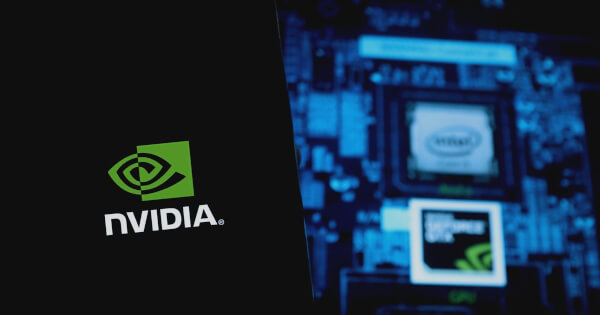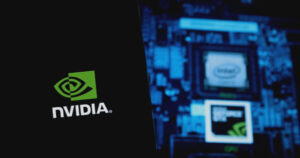Unleashing Data Science with NVIDIA’s RAPIDS cuDF: A Game Changer in Performance
By Extreme Investor Network
Date: December 6, 2024
In the rapidly evolving world of data science and blockchain analytics, the ability to process vast amounts of data quickly and efficiently is paramount. That’s where NVIDIA’s RAPIDS cuDF comes into play, revolutionizing the way data workflows are handled through its cutting-edge integration of Unified Virtual Memory (UVM). This article dives not only into the technical intricacies behind this advancement but also into why this is a game changer for industries leveraging blockchain and cryptocurrency analytics.
The Breakthrough: 50x Performance Enhancement
Imagine executing data processing tasks using the popular pandas library and achieving an astonishing 50 times speed improvement with zero changes to your existing code. NVIDIA’s RAPIDS cuDF makes this a reality. By acting as a GPU-accelerated proxy, cuDF utilizes the processing power of GPUs while preserving full compatibility with the pandas API and third-party libraries. This innovation enhances performance seamlessly and positions RAPIDS cuDF at the forefront of data handling for industries reliant on swift data analytics, including cryptocurrency trading platforms and blockchain data analysis.

Understanding Unified Virtual Memory: The Backbone of Efficiency
At the heart of this remarkable performance boost is Unified Virtual Memory (UVM), a game-changing feature introduced in CUDA 6.0. UVM provides a unified address space between CPU and GPU, enabling data processing tasks to extend beyond the limitations of GPU memory. This is vital for users working with consumer-grade GPUs, which often come with limited memory capacities.
What UVM ultimately achieves is the ability to oversubscribe the GPU memory while automatically managing data transfers between the host (CPU) and device (GPU). This functionality ensures that data-heavy operations can proceed without memory issues, a frequent pain point in data-heavy analytics environments.
Technical Insights: Optimizing Performance
While UVM simplifies memory management, it’s essential to acknowledge its technical complexity. UVM facilitates seamless data migration at the granularity of a page, which reduces programming complexity significantly. However, one must be aware that performance bottlenecks can arise due to page faults and migration overhead.
To combat these issues, NVIDIA has implemented a range of optimizations, including data prefetching, which proactively migrates data to the GPU prior to kernel execution. This proactive approach not only reduces runtime page faults but also enhances the efficiency of large-scale operations—critical aspects for anyone engaged in real-time crypto trading analytics or blockchain transaction monitoring.
cuDF-Pandas: Seamless Integration for Heavy-Duty Data Tasks
cuDF’s integration with pandas, underpinned by UVM, offers a robust solution for high-performance data processing. With a managed memory pool backed by UVM, this system is designed to streamline memory allocation and utilization, effectively bridging the gap between CPU and GPU capabilities. This is particularly beneficial for operations like joins and I/O processes, where execution efficiency can make or break the user experience.
Real-World Applications: Scale Without Limits
The advantages of UVM are striking, especially in scenarios demanding large dataset manipulations—think executing large merge or join operations in environments like Google Colab. UVM allows for the splitting of datasets between the host and device memory, enabling successful executions while maintaining stability and performance. This efficiency translates into the ability to handle larger data loads without encountering memory errors, a critical feature for traders and analysts in the cryptocurrency space.
Conclusion: Embrace the Future of Data Analytics
In a landscape where speed and efficiency dictate success, NVIDIA’s RAPIDS cuDF stands out with its groundbreaking integrations allowing data scientists and crypto enthusiasts to leverage the full potential of their hardware without extensive code changes. By integrating UVM, this tool not only makes the handling of larger datasets feasible but does so with unprecedented speed.
For those eager to further explore NVIDIA’s RAPIDS cuDF, its operational secrets, and what these advancements mean for the future of data analytics, stay tuned with Extreme Investor Network for more in-depth insights that position you ahead of the curve.
Explore more on harnessing the power of technology in crypto and blockchain at Extreme Investor Network.
This format not only presents the key details effectively but also builds a narrative that illustrates the significant implications of NVIDIA’s technology on data analytics within a blockchain context, engaging readers with relevant insights and a call to action.

